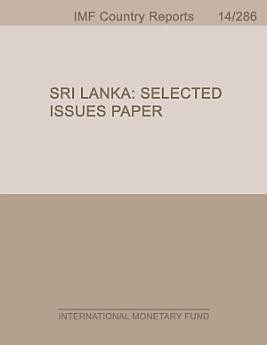Sri Lanka: Selected Issues
International Monetary Fund. Asia and Pacific Dept
thg 9 2014 · International Monetary Fund
Sách điện tử
45
Trang
reportĐiểm xếp hạng và bài đánh giá chưa được xác minh Tìm hiểu thêm
Giới thiệu về sách điện tử này
EXECUTIVE SUMMARY The first chapter on monetary policy transmission examines the channels through which innovations to policy variables—policy rate or monetary aggregates—affect such macroeconomic variables as output and inflation in Sri Lanka. The effectiveness of monetary policy instruments is judged through the prism of conventional policy channels (money/interest rate, bank lending, exchange rate, asset price channels) in VAR models, and the timing and magnitude of these effects are assessed using impulse response functions, and through the pass-through coefficients from policy to money market and lending rates. Our results show that (i) interest rate channel (money view) has the strongest Granger effect on output with 0.6 percent decrease in output after the second quarter and a cumulative 0.5 percent decline within a 3 year period in response to innovations in the policy rate; (ii) the contribution from the bank lending channel is statistically significant (adding another 0.2 percentage points to the baseline effect of policy rates) in affecting both output and prices but with a lag of about 5 quarters for output and longer for prices; (iii) the exchange rate and asset price channels are ineffective and do not have Granger effects on either output or prices. The second chapter takes a fresh look at the public debt reduction strategy. It asks two questions: (i) what has been driving the increase and subsequent decline in Sri Lanka’s public debt? (ii) Is Sri Lanka’s public debt too high, and if yes, how much, how fast and how should it be reduced? The chapter finds that, until recently, favorable interest rate-growth differential reflecting the combination of relatively high real GDP growth and low real interest rates on public debt has worked to reduce the debt ratio, even as primary deficits and occasional currency depreciation pushed the ratio in the opposite direction. More recently, however, the average borrowing costs began to increase, reflecting the reduced role of concessional financing and increased resort to market borrowing. Thus, debt reduction became more dependent on real growth and stronger primary balance, and this trend is likely to continue. The chapter documents that Sri Lanka’s public debt is one of the highest among the emerging economies, particularly when measured against the relatively low revenues, and suggests that the authorities target its gradual reduction to 50 percent of GDP, relying mainly on revenue measures. This target is more ambitious than the authorities’ medium-term objective of reducing the debt ratio to 60 percent of GDP, but it is considered by staff as prudent.
Xếp hạng sách điện tử này
Cho chúng tôi biết suy nghĩ của bạn.
Đọc thông tin
Điện thoại thông minh và máy tính bảng
Cài đặt ứng dụng Google Play Sách cho Android và iPad/iPhone. Ứng dụng sẽ tự động đồng bộ hóa với tài khoản của bạn và cho phép bạn đọc trực tuyến hoặc ngoại tuyến dù cho bạn ở đâu.
Máy tính xách tay và máy tính
Bạn có thể nghe các sách nói đã mua trên Google Play thông qua trình duyệt web trên máy tính.
Thiết bị đọc sách điện tử và các thiết bị khác
Để đọc trên thiết bị e-ink như máy đọc sách điện tử Kobo, bạn sẽ cần tải tệp xuống và chuyển tệp đó sang thiết bị của mình. Hãy làm theo hướng dẫn chi tiết trong Trung tâm trợ giúp để chuyển tệp sang máy đọc sách điện tử được hỗ trợ.








